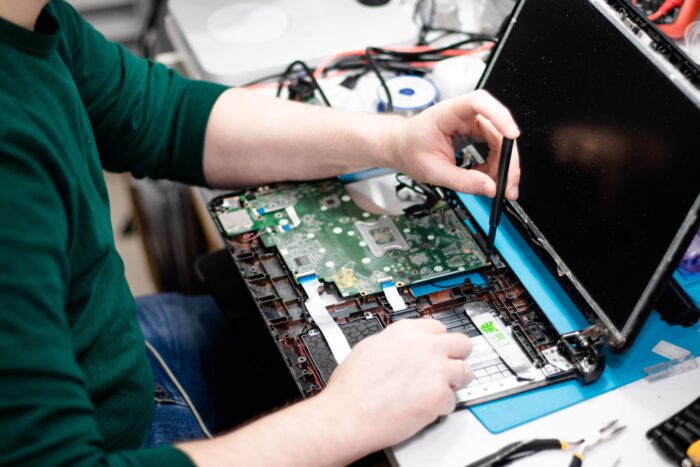Mac Repair Guidelines: What to Do When Your Mac Won’t Start or Respond – 2023 Guide
Your Mac is an essential part of your day-to-day routine. It’s where you save your documents, create your e-mails, and develop your presentations. So, when it will not begin or react, it can be a major aggravation.
There are many reasons that your computer may not be responding, but there are some basic actions you can take to detect and repair the trouble.
In this post, we’ll go through a few of the most common issues that can trigger your computer to stop working to launch or respond, and we’ll give you some tips on what to do if your Mac will not start.
Using expert repair service solutions
While it might be alluring to try and fix the problem yourself, professional fixing solutions can supply the expertise and tools needed to detect and repair the issue appropriately.
Utilizing professional fixing solutions can additionally conserve you money and time in the future. Trying to deal with the problem yourself can often lead to further damage or perhaps the loss of vital data. Mac repair raleigh has the experience and expertise to take care of any kind of issue, huge or small, and can make sure that your computer system is repaired properly and efficiently.

When choosing an expert repair solution, ensure to do your study and discover a reputable carrier. Try to find evaluations and suggestions, and make sure that the company has experience with computer system repair work. With the best specialist repair work service, you can have comfort knowing that your computer system remains in great hands.
Another benefit of making use of expert repair work services is that they frequently use a warranty or assurance on their work. This suggests that if the exact same concern takes place once again within a certain period of time, the repair service will repair it for free. This provides an included layer of security and confidence that your Mac remains in excellent hands.
Furthermore, expert fixing services can offer specialized services that may not be available to the public. For example, they might have accessibility to specialized analysis tools or replacement components that can be hard to discover or get otherwise. This implies that they may have the ability to fix problems that you wouldn’t have the ability to choose your very own.
On the whole, making use of professional fixing services can be a great option if you’re unable to fix the issue by yourself or if you want to ensure that the problem is repaired effectively and effectively. Simply make certain to do your study and select a trusted service provider with experience in Mac repair services.
If you, nevertheless, still want to attempt dealing with the issues on your own, here are actions you should take.
Step 1: Check your power source


The very first point you need to do when your Mac won’t start is to examine your power source. If you’re making use of a laptop computer, make sure it’s plugged in or has enough battery power. If you’re making use of a desktop computer, ensure the power cable is safely linked into the wall and into the rear of your computer.
If you have a power strip, surge guard, or UPS, ensure it’s activated and working properly. If you’re still having issues, attempt connecting your Mac into a various electrical outlet.
Step 2: Inspect your peripherals
If your Mac is still not starting up, the next step is to check your peripherals. Detach any kind of outside tools that may be plugged into your computer, such as printers, scanners, USB gadgets, and displays. Occasionally, peripherals can trigger issues with your Mac’s start-up sequence. Once you have actually detached all peripherals, attempt launching your computer once more.
Step 3: Start your Mac in Safe Setting
This is a special startup setting that disables some features and extensions, which can aid separate problems that might be creating your computer to stop working to launch. Right here’s how to boot your Mac in Safe Setting:
- Close down your Mac.
- Press the power switch to turn it on.
- Right away press and hold the Change trick.
- Launch the Shift trick when you see the login window (you may see a progression bar initially).
- Log in to your Mac.
If your computer system starts up in Safe Mode, you’ll see “Safe Boot” in the login window. You might notice that your Mac is running extra slowly than normal, however this is normal. If your Mac launches in Safe Mode, you can try running some diagnostics and taking care of any type of concerns that you locate.
Action 4: Run Apple Diagnostics or Apple Hardware Examination


These are built-in diagnostics devices that can help you recognize any type of hardware problems that may be creating your Mac to stop working to start up. Below’s just how to run Apple Diagnostics or Apple Equipment Examination:
- Shut down your computer system.
- Press the power switch to turn it on.
- Instantly press and hold the D secret.
- Release the D trick when you see the development bar (this may take a couple of mins).
- Comply with the on-screen guidelines.
Note: If your Mac was launched after June 2013, you’ll need to utilize Apple Diagnostics. If your Mac was launched before June 2013, you’ll require to make use of Apple Hardware Test.
Step 5: Usage Disk Energy
You can attempt making use of Disk Energy to fix any problems with your disk drive. Here’s just how to utilize Disk Energy:
- Start your computer system in Recuperation mode by holding down Command-R while it launches.
- When you see the macOS utility home window, select Disk Energy and click Continue.
- In Disk Utility, choose your Mac Click First Aid, and after that click Run. This will look for any type of errors and fix any type of issues discovered.
Keep in mind: If Disk Energy is unable to fix any type of issues, you might need to erase your hard drive and re-install macOS.
Conclusion


If your Mac won’t begin or react, it can be discouraging and demanding. However do not panic! Follow these guidelines to diagnose and fix the issue. Remember to check your power source and peripherals, boot in Safe Setting, run Apple Diagnostics or Apple Hardware Examination, utilize Disk Utility, and reinstall macOS if required.
And if you’re not comfy with troubleshooting your Mac on your own, don’t hesitate to contact an Apple Support Expert. With these tips and some patience, you can obtain your Mac back up and running smoothly.

